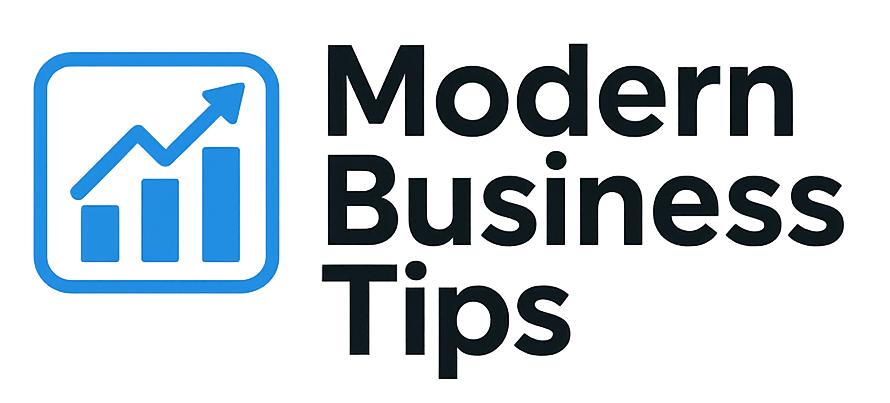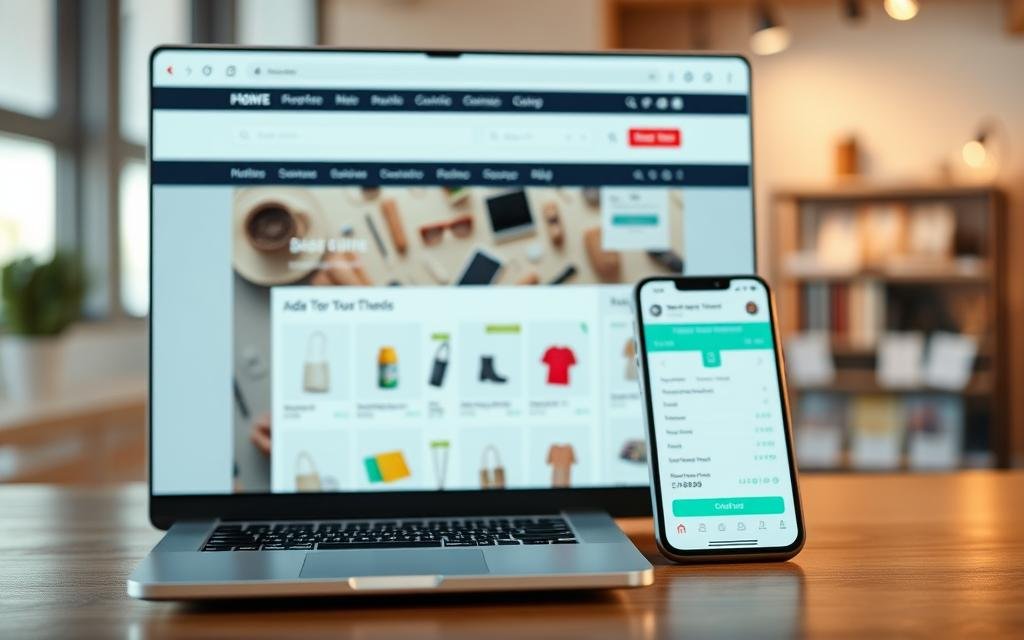Creating a website with ecommerce features is more important than ever. Today, over 25% of all retail sales happen online. In this guide, I’ll show you how to make an ecommerce website. I’ll share my experience in setting up my online store to serve my customers well.
Choosing the right platform is key. Designing a site that looks good and works well is also important. Plus, making sure your site is easy to find online is essential. These steps are vital for anyone starting an online store.
Key Takeaways
- Understanding the importance of ecommerce in today’s retail landscape.
- Choosing the right ecommerce platform significantly impacts success.
- Design elements must reflect the brand and engage users.
- Compelling product pages are essential for conversion.
- Integrating secure payment solutions is critical for customer trust.
- Effective shipping options can boost customer satisfaction.
- SEO strategies are key to attracting traffic to your ecommerce site.
Understanding Ecommerce Websites
Ecommerce has changed how we do business. Now, we can buy and sell online without needing a physical store. Ecommerce website definition means places where you can shop online. This makes it easy for both businesses and customers.
What is Ecommerce?
Ecommerce covers all online business activities. It includes shopping, subscriptions, and digital products. With ecommerce, businesses can reach customers all over the world. It’s convenient for me and my customers, letting them shop anytime.
Benefits of Having an Ecommerce Website
Ecommerce offers many benefits. Here are some key ones:
- 24/7 Operations: Ecommerce sites work all day, every day. This means you can show products and take orders anytime.
- Wider Audience Reach: Ecommerce lets businesses reach more people. It’s not limited by location, opening up global markets.
- Streamlined Inventory Management: Ecommerce tools help manage stock better. This makes things easier and saves money.
- Centralized Marketing: Online platforms let you use one marketing plan. This boosts your digital presence.
- Brand Trust and Credibility: A good ecommerce site builds trust with customers. This is key for making sales.
Choosing the Right Ecommerce Platform
Choosing the right ecommerce platform is key to my online business’s success. I looked at many options and found some top platforms. Each has special features for different needs, so I had to think about usability, cost, and how it grows with my business.
Popular Platforms I Considered
In my search, I checked out these platforms:
- Shopify: It’s easy to use and has lots of themes.
- WooCommerce: It’s great for those who like to customize, thanks to its flexibility.
- BigCommerce: It’s perfect for big businesses with lots of features.
- Squarespace: It’s great for creatives, with beautiful designs and ecommerce tools.
Comparing Features and Pricing
Looking at features and prices, I saw both similarities and differences:
| Platform | Monthly Cost | Transaction Fees | Mobile Optimization | Payment Processing |
|---|---|---|---|---|
| Shopify | $29 | 2.9% + 30¢ | Yes | Shopify Payments |
| WooCommerce | Free | Varies | Yes | Many options |
| BigCommerce | $29.95 | 0% | Yes | Multiple options |
| Squarespace | $18 | 3% for Basic | Yes | Stripe, PayPal |
By looking at these details, I could see which platform fit my goals best. The right choice depends on what I need, as each platform has its own benefits for my online store.
Domain Name and Hosting
Starting strong online begins with picking a great domain name. A good name makes a lasting first impression. I looked for something short and clear that shows who I am.
An easy-to-remember name helps keep customers interested. The right domain extension also matters a lot. It affects how people see my online store.
Selecting a Domain Name
I dug into what makes a good domain name. I considered length, relevance, and being unique. I wanted a name that fits my products but is simple.
A great domain name boosts SEO and brand awareness. It helps customers find my site more easily.
Choosing a Reliable Hosting Service
Finding a reliable hosting service is key for my online store. My host needs to keep my site up and running, even when lots of people visit. I looked at things like bandwidth, speed, and support.
Having a host that grows with me is vital. It ensures a smooth shopping experience for my customers. This is essential for any online business to succeed.
Designing My Website
Creating a good website for selling products takes careful planning and detail. I focused on making the site easy to use and navigate. I knew how important fast load times and being mobile-friendly were. Here’s what I did to design my website.
Elements of Effective Website Design
I aimed to add website elements that draw in visitors and turn them into customers. The main features I included were:
- Clean Layout: A simple design helps users find what they need fast.
- High-Quality Images: Great pictures grab visitors’ attention and show off products well.
- Responsive Design: Making sure the site works well on all devices was key.
- Easy Navigation: Simple menus and search make for a smooth experience.
Customizing Templates vs. Building from Scratch
I looked into customizing templates versus starting from scratch. Each method has its benefits for my website design. Customizing templates lets me quickly get started with important features and a nice look. On the other hand, starting from scratch gives me full control over the design, making it fit my brand perfectly.
Setting Up Product Pages
Creating effective product pages is key to turning visitors into buyers. I focused on two main areas: writing compelling product descriptions and using high-quality images. These elements improve the user experience.
Creating Compelling Product Descriptions
Each product description highlights the key features and benefits. It clearly shows what makes each item special. I used engaging language to inform and entice customers.
Bullet points help break down features into easy-to-read segments. This makes the information more accessible. Using relevant keywords also boosts search engine visibility, driving more traffic.
High-Quality Images and Visuals
Visuals are important for engaging visitors and influencing their decisions. I made sure every product page has high-quality images that accurately show the products.
Multiple angles and close-ups add depth, helping customers feel confident in their choices. Lifestyle images, when used, give a contextual view that can build an emotional connection. Investing in visuals makes my product pages more appealing and can increase conversion rates.
Integrating Payment Solutions
Choosing the right payment options for ecommerce is key to a great customer experience on my website. I looked into various secure payment gateways for smooth transactions and to build trust. PayPal, Stripe, and Square were top choices because they’re reliable and easy to use.
Understanding each gateway’s fees and support was important for my online business. This helped me make smart choices.
Popular Payment Gateways I Explored
- PayPal – Known for its widespread acceptance and consumer trust.
- Stripe – Offers a developer-friendly interface with extensive features.
- Square – Provides a user-friendly system, ideal for small to medium-sized businesses.
Security Features to Look For
Security is a must when picking payment solutions. I looked for SSL certificates and PCI compliance. These are key to protecting customer data and creating a safe shopping space.
A secure payment process builds trust. It encourages customers to shop again and boosts overall satisfaction.
Implementing Shipping Options
Shipping options are key to an ecommerce business’s success. I found that having many shipping choices makes customers happy and can boost sales. Options like flat-rate shipping, free shipping for big orders, and fast shipping meet different customer needs.
Different Shipping Methods
There are several shipping methods to consider:
- Flat-rate Shipping: This method charges the same rate for all orders, no matter the size or where it’s going.
- Free Shipping: Many customers love free shipping. It encourages them to buy more by setting a minimum order amount.
- Expedited Shipping: For those who need their items fast, this option is perfect. It’s a bit pricier but worth it for some.
- International Shipping: Shipping to other countries opens up more customers. But, it means dealing with customs and import fees.
Setting Up Shipping Costs
It’s important to set shipping costs clearly to keep trust with customers. I looked at a few things when setting these costs:
- Product Weight: Heavier items cost more to ship.
- Dimensions: The size of the package affects shipping rates, too.
- Destination: Shipping to far-off places can cost more.
- Carrier Rates: I compared different carriers to find the best shipping deals.
Being clear about shipping costs helps customers feel secure. This makes them more likely to shop again and again.
Optimizing for Search Engines
SEO for ecommerce is key to getting more visitors to my site. I started by using SEO tools that fit well with my platform. These tools help me analyze my content and keywords efficiently. Knowing the basics of SEO is important for making my site more visible.
Basics of SEO for Ecommerce
Good SEO involves doing thorough keyword research and optimizing keywords in important places. This helps my ecommerce store show up higher in search results. It’s also important to make sure each page has a unique and clear URL.
This helps search engines understand my pages better and makes browsing easier for users.
Using Keywords Effectively
Using the right keywords in my content is essential. I make sure to use descriptive meta tags and optimize images with alt text. This helps search engines get what my site is about.
Strategically placing keywords in product descriptions also helps my site get seen more online. For more tips, I suggest looking at the SEO Starter Guide. By using these strategies, I can keep improving my site’s ranking and attract more customers.
Launching My Ecommerce Website
As the final steps were taken, I worked on a detailed ecommerce pre-launch checklist. This checklist included testing payment and shipping processes. It was vital to ensure everything worked smoothly before the site went live.
Double-checking product pages and fixing any user experience issues were part of the checklist. This thorough preparation helped me avoid any last-minute problems.
After the site was up, I started using different ecommerce promotion strategies to attract visitors. Social media marketing was key, letting me show off products and connect with customers. I also sent targeted emails to subscribers who were waiting for the launch.
Using basic SEO helped my site show up better in searches. This brought in more organic traffic.
Keeping up with promotions after the launch is important. I stay active on social media and email my audience regularly. This creates excitement around my site and helps with sales growth.



